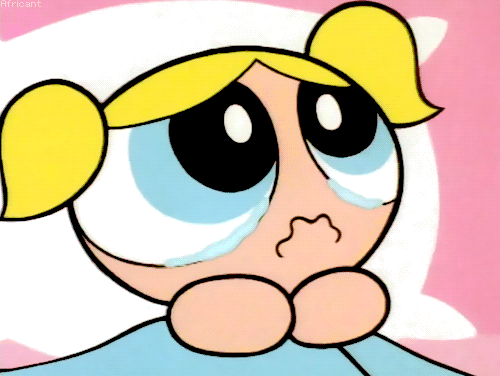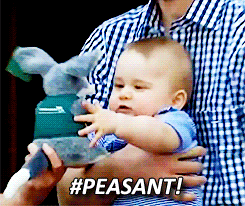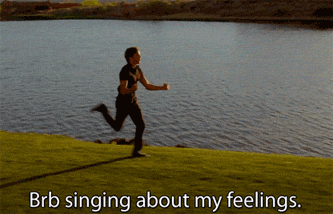Your guide to the next two weeks of the summer. New course content posted daily. This is a living document; reblog, add commentary, ask thoughtful questions! Syllabus More Reading Instructor Info
Don't wanna be here? Send us removal request.
Text
PENULTIMATE DAY OF SUMMER CHALLENGE

I’m not crying, I promise. There’s no crying in teaching communication.
Today we’re going to connect the dots between the units we’ve covered in previous weeks, which can seem fairly disparate. How do we make those connections, make sense of them, and make decisions that prepare us for our lives and possible future careers?
Then we’re going to talk about tomorrow’s presentations. I’d like to hear the specific topic that you’re going to be presenting on so that I can provide feedback. Remember that you’re making a single, well-reasoned and well-researched prediction about how technology will impact one of the fields we’ve studied, and that you have 5 minutes to make it.
I’ll also announce the winner of yesterday’s PR team vote, and you’ll fill out course evaluations. We’re probably gonna have some time remaining, but we’ll take it up by giving you some time to work on your presentations.
Your assignment for today is simple: reflect on the course. Go back and read the first post you wrote for this course. What have you learned? What will this course do for you moving forward? Less than or equal to 300 words, please. Tag the post as below.
14 notes
·
View notes
Text
W2: PUBLIC RELATIONS
Today, we’re talking about the theories and practices of PR, and I’ll be countering some misconceptions about public relations, including the idea that PR is as easy as being able to talk really well.

Well, yes, Elle Woods, it’s harder than it looks.
We’re gonna go over the various kinds of PR and the reasons why PR is important not just in times of crisis. We’re also going to go over the six steps of PR issues management. And then we’re gonna practice them in the second half of class in agencies of our own.
The assignment is a change from what’s listed on the syllabus. On your Tumblr, please vote for which team did the best at our in-class PR activity and explain why you voted that way in less than 300 words. You cannot vote for your own team, because that’s too easy. As always, tag your posts!
29 notes
·
View notes
Text
T2: Journalism
Today we’re going to be talking about storytelling and journalism, two things that go hand in hand but are perhaps more complicated in practice. Many issues facing journalism today are also about ethics and responsibility. They’re difficult questions, but I’m interested in your answers. Bring your thinking caps.

We also have a special guest today! Jenni Whalen is a veteran freelance journalist and former managing editor of MedTech Boston, a medical technology news startup site. She’s currently Executive Assistant of Editorial at Upworthy, which is in the midst of refocusing itself on reported and edited content. Jenni has great insights into what journalists do now and where journalism might be headed in the future.

Today’s assignment is to respond to the prevailing industry trend of sponsored content, or #sponcon. The advantages of the practice are obvious for the journalism industry and for advertisers, but its implications for journalism’s readers and public are less clear. Think through what you think the responsibility of journalism is to the public. Does sponsored content support, modify, or betray that responsibility? What do consumers need to know about how journalism sites make money? Are some kinds of sponsored content deals ok while others aren’t? Less than or equal to 300 words, please.
27 notes
·
View notes
Text
M2: Participatory Culture
Participatory culture is a set of ideas about a more inclusive vision of cultural production, one that isn’t characterized by divisions between official and unofficial, author and fan, and other such binary categories. This idea is at once familiar and strange, for reasons we’ll be discussing in detail. What does it mean to participate in culture? How can we characterize this participation? That and more will be discussed today.

The assignment is to find an example of participatory culture for a fandom that you could feasibly be a part of. If you do not self-identify as a fan of a piece of media, choose your favorite TV show, movie, book series or music group and look for an example there. Give <300 words of analysis. What does the example you’ve found do with the original text? Why does it do that? (Feel free to include examples that are critical of the original text.)
25 notes
·
View notes
Text
FINAL PRESENTATIONS

Please be more composed than Mr. Schrute as you give these!
As I mentioned in class, there will be 7 groups of three and 1 group of two, for a total of 8 presentations by 23 students.
Each presentation will be up to 5 minutes in length. All group members must speak.
Your task is to mobilize what we’ve learned in class to make a prediction about the future of journalism, film, television, public relations, or participatory culture. This will necessarily involve talking about technology; however, you should not assume that the development of technology will inherently result in one effect. (This is a fallacy called technological determinism.) As I’ve endeavored to do in class, work from multiple angles: the social, the industrial, and the technological all play a part in the media industries.
The presentation is, as all such things are, an argument. You’ll be arguing for the validity of your prediction. This means your presentation should be backed up by sound logical reasoning and good research.
Please email me with the names of all group members and the specific prediction you’re making by Monday at noon.
If you wish, you can construct visual aids (e.g. a Prezi or Powerpoint) for your presentation. That will need to be emailed to me by 10 am Friday morning.
Final presentations are scheduled for Friday at 11am. There may be a room change; I’ll announce it when I receive details. In any case, there’s a reception on the BU Beach at noon for you and your friends/family members. Those friends and family members are encouraged to attend our presentation window, so make these count!
I’m excited to hear what you come up with!
0 notes
Text
F1: TV, NOT TV, & BEYOND TV
Television scholar Amanda Lotz has noted that the word “television” seems to endure for a host of different kinds of content, even as the original delivery system called television is thought to be archaic, outmoded, and on the decline. With that in mind, I want to concentrate on your experiences of what television is, what value television has in your life, and how you make viewing decisions in age where the amount of available video content has exponentially increased.

I’ll be giving just a few background details on how scholars and critics think about television systems, how television developed in America, and where we’re at in the industry now. Then we’ll have a free-flowing conversation about your experiences of television.
The very last thing we’ll do in class is screen a recent episode of Modern Family called “Connection Lost.” It has a very unique style, as you’ll quickly realize. What I want you to do is write a <300 word review of the episode based on the things you value about TV. In other words, evaluate the show based on its execution of the thing you like most about TV. Do you need a serial narrative to draw you in? Are you so averse to commercials the show’s commercial nature turns you off? Think deeply about what you want from TV and what you like and write the review. Tag it as below.
25 notes
·
View notes
Text
TH1: FILM AS INDUSTRY & ART
We’re talking movies/film/cinema today – yes, those terms are essentially interchangeable, and don’t let anyone tell you differently. I’ll be giving you a rundown of the 6 most major industrial moments in the history of the film industry, as well as talking about where the industry is now. Then we’ll discuss ways of thinking about film as art, and how film has been legitimated as an artistic form.

The assignment for today is to work in groups to storyboard a 12-18 shot film. We’ll go over storyboard conventions and then you’ll have some of our class time to work on this assignment with people in your group. Your film should tell a story, but it should not have dialogue. Tell it entirely through visuals. If you wish, you can make your storyboard out of images that you take with a camera or your phone. One member of your group should post them to their blog, with the group members’ names in the tags. Then, submit the post URL to the course blog through the submission feature.
1 note
·
View note
Video
youtube
W1 ASSIGNMENT: View this video, from YouTube’s pitch to advertisers. What challenge does John Green claim YouTube poses to traditional advertising models, and how does he propose advertisers can continue to be meaningfully involved with YouTube? Answer, then consider this pitch from the advertiser’s perspective. Why might clients be excited about the prospect of sponsoring a “community”? What might be difficult about demonstrating return on investment for this kind of advertising? Less than or equal to 300 words.
36 notes
·
View notes
Text
W1: Advertising as Industry, Art and Career
Today’s class will begin with special guest Drew DiSabatino, a copywriter for Hill Holliday, one of the premier full-service advertising agencies in the US, and certainly the major player in Boston. Drew’s going to speak to how advertisers work and how they see their jobs. If you’re at all interested in working in advertising, ask him questions!

We’ll then talk about the major shifts in the advertising industry over time: shifts in what advertisers created, shifts in who is targeted by advertising, and shifts in how advertising is targeted. We’ll then take a look at two web-focused case studies: the case of The Hunger Games: Catching Fire and the case of YouTube.
1 note
·
View note
Text
TUESDAY: SIGNS, IMAGES, AND VISUAL COMMUNICATION
Today we’ll be talking about a major component of communication, and mediated communication specifically – the image. We’ll discuss various ways of analyzing the visual, why images are so powerful, and why images are a dominant mode of communication today.

Ok, Bob Ross.
We’ll also be reading Jason Eppink’s “A Brief History of the GIF (So Far),” which can be downloaded here. The interaction of the visual components with the text is of interest, but the article also provides important background for today’s assignment.
For today, please reblog one of the GIFs posted below (they’re tagged #BUSC3 T1 and #GIFassignment) and provide <300 words of commentary. This commentary should be rooted in the terms we discussed in class. What signs make up the GIF? How do those signs combine to make meaning? Consider that GIFs are pieces of one media artifact, edited into a particular form, and utilized in a completely different context. Make sure to tag the post with #BUSC3 T1 and #GIFassignment.
I’ll be posting instructions on how to find the reblog button after class.
2 notes
·
View notes
Photo

Prince William, Princess Kate, and Prince George
20 notes
·
View notes
Photo

Ron Paul, an American politician
6 notes
·
View notes
Photo

Cookie Monster, from Sesame Street, an American children’s TV show
8 notes
·
View notes
Photo

Clint Dempsey (USA) celebrates an early goal in USA vs. Ghana at FIFA Men’s World Cup 2014
8 notes
·
View notes
Photo

Zac Efron in High School Musical 2
26 notes
·
View notes
Link
If you’re using Tumblr for the first time (as it seems many in class are), here’s a handy guide with visuals to get the most out of creating your blog. I think the visuals are based on a previous version of the site, but the important stuff is in the same place.
1 note
·
View note
Text
M1: VERBAL & NONVERBAL COMMUNICATION
This is a day full of introductions. First, we’ll be introducing ourselves to each other – me to you, you to me and your classmates. And it’ll be exactly as charming and not at all awkward as Anna Kendrick in this GIF.

Then we’ll launch into the first of two days of introductory material on communication. Today, we’ll discuss what communication is, who communicates and why, and deal with some terminology that we’ll be able to use in the next two weeks.
Finally, I’ll introduce one theory of human communication: Kenneth Burke’s “Definition of Man.” You can download it using this link. We’ll be breaking it down in class, so don’t worry if it seems somewhat intimidating and obtuse.
Your assignment for today is two-fold: First, build a Tumblr account for the course. If you already have a Tumblr, you may want to register a different email address and build one exclusively for the course. Feel free to customize it how you want and use it to connect with classmates and the Tumblr community writ large. Make sure you’re following the course blog with that Tumblr account.
Second, create a post of less or equal to than 300 words in which you tell me why you’ve taken this seminar and what you’re hoping to get out of it. Please make sure you tag the post as below – note that the tag has a space between BUSC3 and M1.
1 note
·
View note